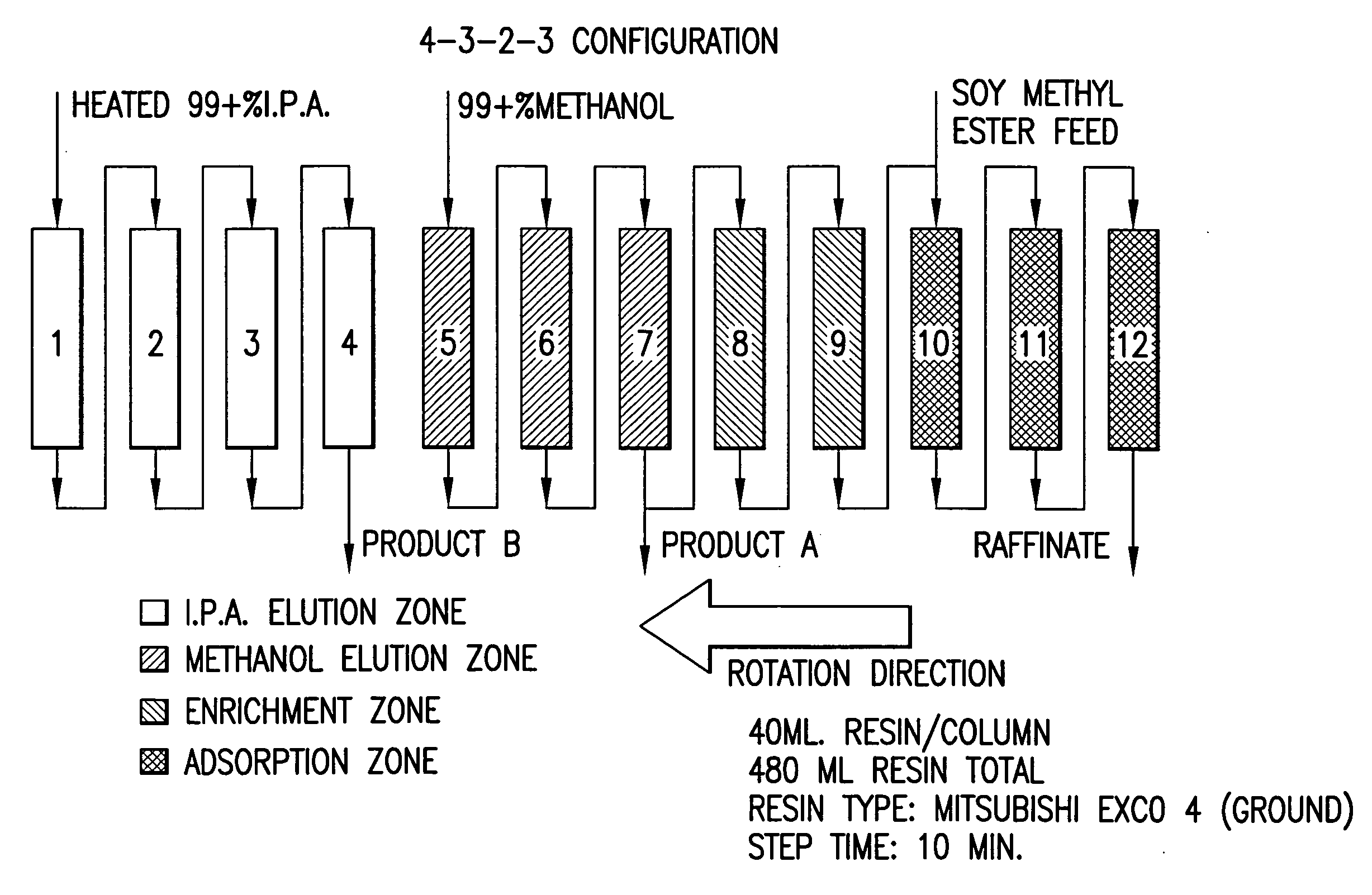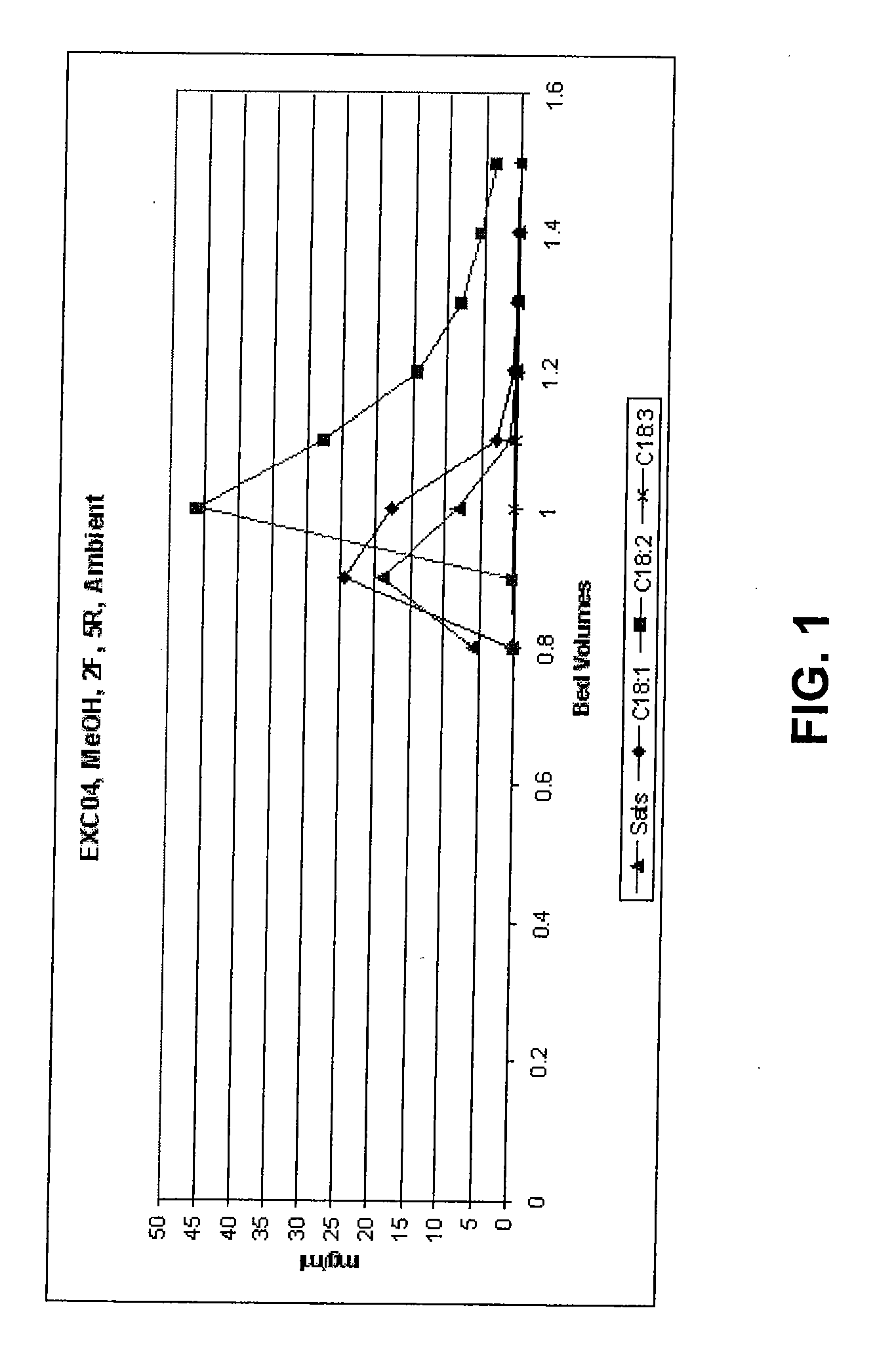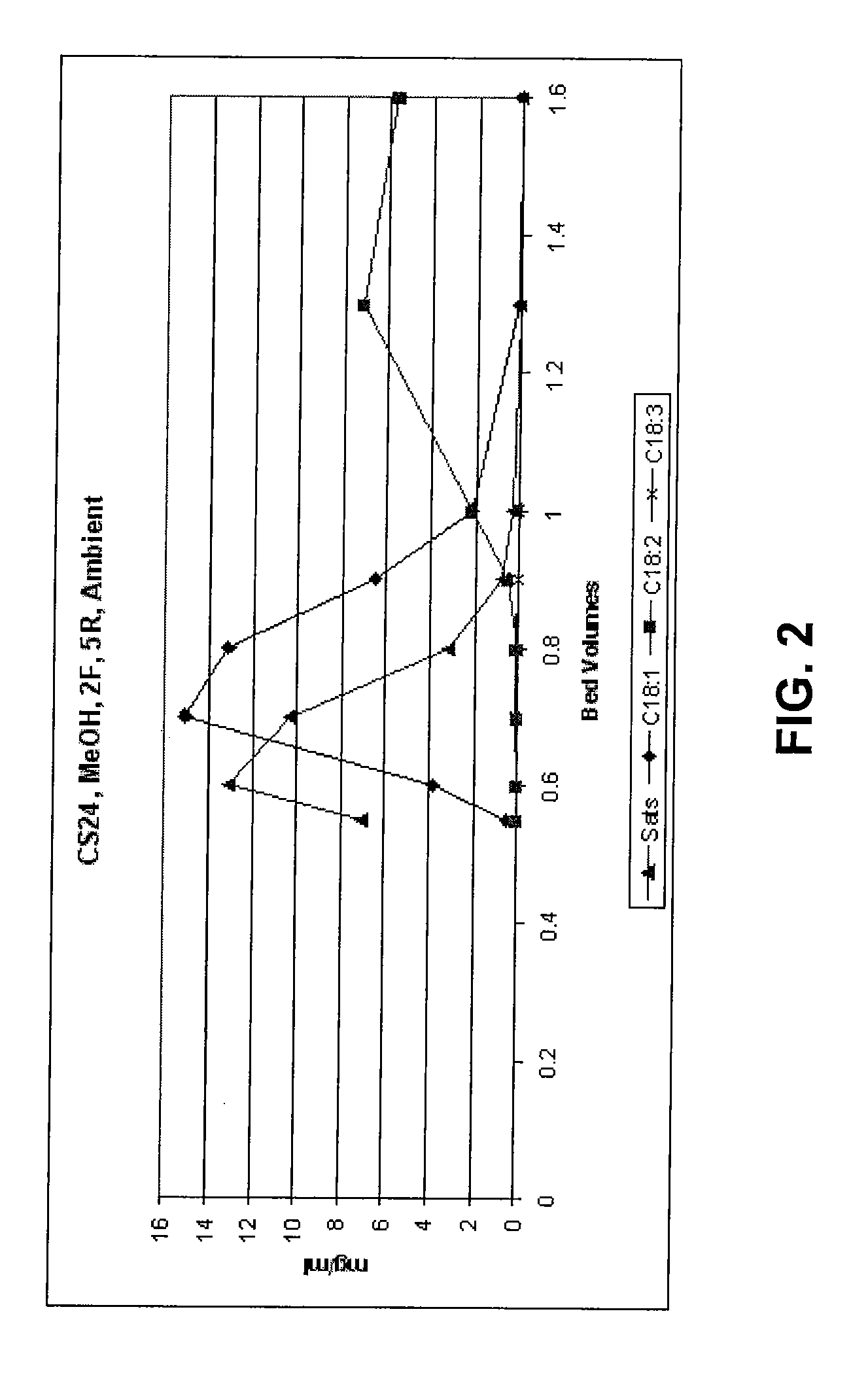Method of Preparing a Composition Using Argentation Chromatography
a technology of argentation chromatography and composition, applied in the field of composition preparation, can solve the problems of unattractive large-scale separation of compounds, lack of robustness and homogeneity in available support materials, and inability to use, etc., and achieve the effect of increasing selectivity
- Summary
- Abstract
- Description
- Claims
- Application Information
AI Technical Summary
Benefits of technology
Problems solved by technology
Method used
Image
Examples
example 1
Pulse Test of Argentized Cationic Resin
[0082] Mitsubishi EXC04 resin (Mitsubishi Chemical Corp. Tokyo, Japan) was ground to particles of 90-150 microns. The resin was then packed into a column and rinsed with 3 bed volumes (BV) of deionized water, after which the resin was argentized by passing 20 BV of a solution of 5% silver nitrate through the resin column. This was followed by a 4 BV deionized water rinse and then dried by thorough rinsing with dry methanol to produce a column containing a first argentized adsorbent. The first argentized adsorbent was then used to perform a pulse test on Soygold 1100, a commercially available mixture of soy fatty acid methyl esters (FAME) (Ag Environmental Products L.L.C., Omaha, Neb.; the SME / UME ratio of Soygold is 0.193).
[0083] A pulse test was carried out at ambient temperature using a 15 mm×600 mm jacketed glass column loaded with 100 milliliters of first argentized adsorbent. The feed material (Soygold 1100, 2 ml) was added onto the top ...
example 2
Pulse Test of Argentized Cationic Resin
[0085] Finex CS 24 (Finex Ltd., Kotka, Finland) was argentized as in Example 1 to form a second argentized adsorbent and used in a pulse test as in Example 1. Elution of Soygold 1100 FAMEs developed after a smaller volume of eluant, but more tailing took place with this second argentized adsorbent than in Example 1 (FIG. 2). A fraction enriched in C18:2 FAME and depleted of Sats and C18:1 FAME could be obtained by collecting the effluent starting at 1.3 bed volumes.
example 3
Simulated Moving Bed Chromatography of Argentized Cationic Resin
[0086] Based on the information obtained in Example 1, Simulated Moving Bed Argentation Chromatography was carried out in a 12-column AST type simulated moving bed (SMB) system (FIG. 3) using glass columns containing 40 milliliters, each, of argentized ion exchange strong acid cation resin (in this case Mitsubishi EXC04, ground and argentized as in Example 1).
[0087] Feed containing compounds to be separated (in this case, Soygold 1100 FAME) was continually fed to the system, which was configured in a 4-3-2-3 configuration. Two elution solvents were simultaneously fed into different zones. As the operation proceeded, valves changed the point at which feed and solvents were applied, simultaneous to changing the points at which the effluent streams were removed. In this manner, movement of the bed is simulated.
[0088] The SMB was operated with 3 columns in the adsorption zone. In this zone feed was introduced into the sy...
PUM
| Property | Measurement | Unit |
|---|---|---|
| Fraction | aaaaa | aaaaa |
| Fraction | aaaaa | aaaaa |
| Fraction | aaaaa | aaaaa |
Abstract
Description
Claims
Application Information
 Login to View More
Login to View More - R&D
- Intellectual Property
- Life Sciences
- Materials
- Tech Scout
- Unparalleled Data Quality
- Higher Quality Content
- 60% Fewer Hallucinations
Browse by: Latest US Patents, China's latest patents, Technical Efficacy Thesaurus, Application Domain, Technology Topic, Popular Technical Reports.
© 2025 PatSnap. All rights reserved.Legal|Privacy policy|Modern Slavery Act Transparency Statement|Sitemap|About US| Contact US: help@patsnap.com



